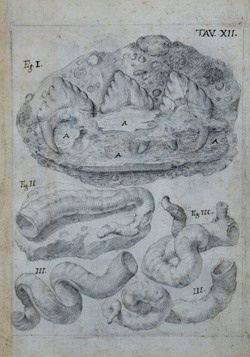
In a world of Facebook, Instagram and selfies, the power of the image has never been greater. However, the role of the image in the communication of science in Britain can be traced back over 350 years to the foundation of the Royal Society in 1660. The Society’s weekly meetings and published
Philosophical Transactions provided a new medium and network for the dissemination of scientific discoveries, along with illustrated descriptions of experiments, reviews of important new publications and translations of foreign ones.
A variety of graphic methods were used to explore, develop and propagate the ideas that drove the emergence of modern science. And, many original images from this revolutionary phase in the history of science are preserved in the archives of the Royal Society. Their current display is thanks to historians of science from the University of Cambridge and the librarians of the Royal Society.
Science made Visible in the Royal Society is well worth a visit to see these historic images drawn from human anatomy and the emerging sciences of natural history. Remarkable works by European luminaries such as Johannes Swammerdam (1637-1680), Antoni van Leeuwenhoek (1632-1723) and Agostino Scilla (1629-1700) can be compared with those of ‘home-grown’ pioneers, such as Isaac Newton (1643-1727) and Robert Hooke (1635-1703). Hooke’s enormous ‘pullout’ engraving of a flea from his 1665
Micrographia is accurate enough to make anyone itch. Whilst many images are familiar from modern reproductions, seeing the originals and their ‘original’ reproductions still makes a big difference.
The remarkable accuracy of Scilla’s illustrations of Cenozoic fossils is of palaeontological importance. When published in his 1670 book ‘La vana speculazione disinginnata dal senso’, they gave very visible support to his argument that fossils are the remains of once living organisms. Unusually for a collection of this time, Scilla’s fossils and original drawings have survived thanks to the acquisitiveness of that virtuoso collector Dr John Woodward (1665-1728). Woodward bequeathed them to the University of Cambridge along with his magnificent collection of some 10,000 specimens, mostly fossils and minerals in their original cabinets. Back in Cambridge an interactive display in the Sedgwick Museum allows exploration of Scilla’s collection in its ‘virtual’ entirety for the first time.
Reviewed by Douglas Palmer
SCIENCE MADE VISIBLE: AN EXHIBITION OF DRAWINGS, PRINTS, OBJECTS. Exhibition at the Royal Society, 6-9 Carlton House Terrace, London SW1Y 5AG. T: 0207 451 2500. Open to the public until December 2018, Mon-Fri, 10am-5pm.
(Image: Scilla’s original drawing of a fossil jawbone and teeth of a shark-toothed dolphin Squalodon sp.)